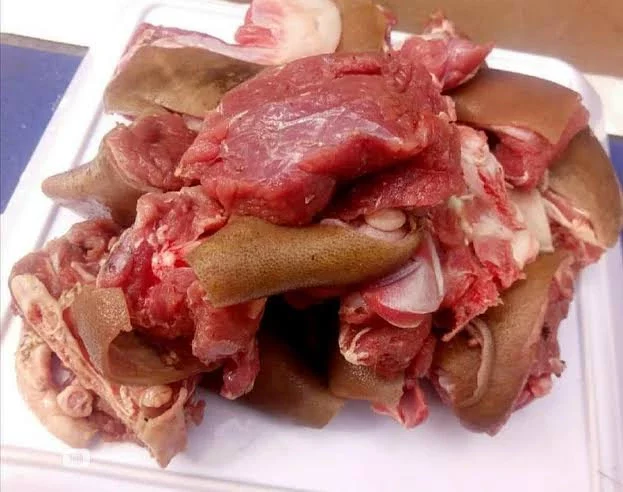
The Coconut tree is a member of the palm tree family (Arecaceae) and the only living species of the genus Cocos. The term "coconut" or (archaic "cocoanut") can refer to the whole coconut palm, the seed, or the fruit, which botanically is a drupe, not a nut.
The name comes from the old Portuguese word coco, meaning "head" or "skull", They are ubiquitous in coastal tropical regions and are a cultural icon of the tropics.
They likely originated in India and Southeast Asia. Today, coconuts grow in warm climates across the globe, such as the Caribbean and parts of Africa and South America.
When coconuts are harvested, they are typically filled with coconut water and meat, the water is accessed by cutting or drilling a hole into the coconut, allowing the liquid to be extracted and consumed.
The mystery behind the water in a coconut fruit is still inexplicable till date. We keep wondering how this happen but from a scientific point of view , it will be best explained under the topic below
How does water enters into the coconut?
Usually, coconut tree roots are very long and absorb water,
The root system of the coconut tree will absorb the water from the ground by osmosis. Osmosis is the process of water diffusion from a dilute solution to a concentrated solution through a partially permeable membrane.
It is the process of liquid flowing in narrow spaces without external forces like gravity.
Then the water will move to the innards through the capillary actions; but the water is saline. As this water reaches every part of the tree, the water is filtered and turns into freshwater. Freshwater gets accumulates inside the coconut, and it is called endosperm. This endosperm acts as the food or nourishment for the coconut's growth.
Here's how it happens:
Development of the Coconut: Coconuts are the fruit of the palm tree (Cocos nucifera). As the coconut develops, it goes through several stages.

Endosperm Formation: The inner part of the coconut, known as the endosperm, is initially a liquid called "coconut water" or "coconut juice." The endosperm is the nutrient-rich tissue that nourishes the developing embryo inside the coconut.
Coconut Water Accumulation: During the early stages of development, the coconut water accumulates within the cavity of the coconut, surrounding the developing embryo. It is a clear liquid that contains various nutrients such as sugars, vitamins, minerals, and electrolytes.
Maturation and Growth: As the coconut matures and the embryo inside develops into a coconut meat or kernel, the coconut water continues to provide nutrients to support the embryo's growth.

Coconut Maturation and Water Absorption: As the coconut matures further, the endosperm solidifies into the white flesh or meat. The young coconut meat absorbs some coconut water during this process, z
Whole Coconut
Coconut meat is the edible white flesh lining the inside of a coconut, also called the "kernel." Coconut meat can be used to create coconut oil, coconut cream, coconut milk, and dried coconut, you also can eat it fresh,. According to research coconut meat provides nutritious fats and various other potential health benefits.
Health Benefits of Coconut
Coconut can be a healthy addition to your diet when consumed in moderation. Here are some of the possible health perks to keep in mind.
Coconut is generally regarded as a source of healthy fat. The meat contains protein and fiber, as well as some essential minerals such as:
Iron
Manganese
Copper
Magnesium
Two tablespoons of fresh, shredded coconut contain the following nutrients:
35 calories
Less than 1 gram of protein
3 grams of fat
2 grams of carbohydrates
1 gram of fiber
1 gram of sugar
Historically, people have used coconut as part of traditional medicine. The meat is said to, among other things: Counteract some poisons Protect against disease, Ease inflammation, Kill bacteria
Nutritious And Healthy
Coconut water is considered to be more nutritious and healthier than whole milk. It contains lauric acid which is considered equivalent to mother's milk. It is naturally sterile as it permeates through the filtering husk. It also helps with hangovers. Coconut water has a natural isotonic beverage in the same level as that in the blood.
Treats Epilepsy
A ketogenic diet is a low-carb diet that is used to treat various disorders. Its best-known application is treating epilepsy in children. The diet involves eating little carbs and large amounts of fat which can lead to increased concentrations of ketone bodies in the blood. This diet can dramatically reduce the rate of seizures in epileptic children.
Prevents Skin Cancer
It improves the moisture and lipid content in the skin and prevents skin cancer by blocking 20% of harsh Ultra Violet rays. It can be used as a body and skin moisturizer as it hydrates the skin by replenishing the natural oils. Coconut oil can also be used to clean the face by rubbing it in circular motions.
Promotes Blood Circulation
Eating coconut regularly boosts oxygen in the skin and promotes blood circulation. Our cells need an adequate amount of oxygen which can only be made possible by proper circulation in the body that carries oxygen. This allows proper breathing of the skin and promotes healthy and flawless complexion.
Fights Bacteria
Coconut contains high content of monolaurin and lauric acid which helps to kill bacteria, viruses and fungi and keeps infections at bay.
Prevents Urinary Tract Infection
The natural diuretic property of coconut treats urinary tract infections. It improves the flow of urine to get rid of the infection naturally.
Better oral health
The MCFAs found in coconut meat also contain antimicrobial properties. These can be useful in preventing infections related to root canals and other teeth issues. Although eating coconut meat is not a substitute for proper dental hygiene, it can help kill some of the unwanted bacteria found in your mouth and protect your gums and teeth from infection or cavities.
Helps lose weight
Regularly eating coconut meat might help with weight loss. The MCFAs widely found in coconut meat are associated with fat burning.
Possibly Helps Improve "Good" Cholesterol
About half of the saturated fat in coconut comes from lauric acid, which can help raise levels of heart-protective HDL ("good") cholesterol, Unfortunately, it increases the more harmful LDL ("bad") cholesterol, too. In the context of a healthy diet, there's nothing wrong with using small amounts of coconut oil, but it shouldn't be the only oil you use.
May Support Healthy Blood Pressure
Coconut water offers a good source of potassium, a mineral that helps balance sodium levels in the body and regulate blood pressure, helps Improve Skin Health
Helps Improve Skin Health
Smoothing coconut oil on skin and hair is a popular way to add moisture. Coconut oil can seal moisture into skin to treat dryness and address eczema, likely because it improves the skin barrier function (skin's ability to keep water in and irritants out).
Coconut can best be processed into the following
Coconut Oil
Unrefined virgin coconut oil can be used to cook or applied to your skin and hair.Coconut oil does not have to be refrigerated. Simply store it in a cool, dry place, Coconut oil is a solid at cooler temperatures, at warm temperatures, it's a liquid.
Coconut Milk
Coconut milk can be bought in a can, and you have the option of full- or reduced-fat, depending on your dietary goals. Ideally, coconut milk contains just coconut and water. The cans can be stored unopened in your pantry.
Coconut Water
You have a lot of options when shopping for coconut water, and it mainly comes down to your taste preference. However, look for beverages with no added sugar.
Coconut Flour
Look for coconut flour as a new addition to the other flours at the grocery store. You can also easily buy bags online. Store coconut flour in a cool dry place in an airtight container out of the sunlight.
















Comments